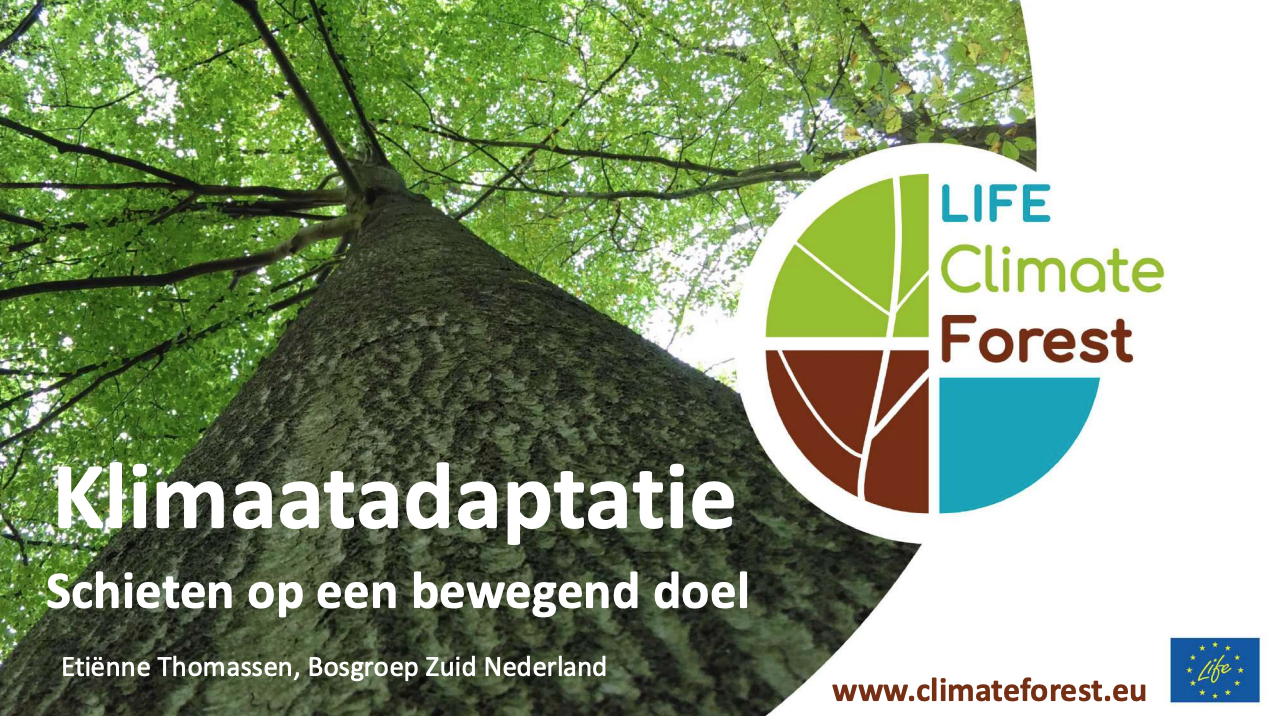

Presentation at SUPERB symposium
What an energetic meeting it was in Moergestel. More than 200 people with a green heart came together to share experiences and stories, to be inspired and to look further into the future. It bubbled and fizzled. We from LIFE Climate Forest also look back with pleasure on the SUPERB forest symposium 'working on a resilient future with today's knowledge'. Etiënne Thomassen drew the necessary attention to LIFE Climate Forest and climate adaptation with his presentation to a full house.
Meanwhile, the presentation 'Climate adaptation of forests: shooting at a moving target' is also online on the site of de Bosgroepen, but we are also happy to share the summary below....
Climate change is rapid and appears to be accelerating
As climate changes, forest growth habitats change, and forest managers know that growth site factors combine to determine the suitability of a site for a tree species and the natural forest community. So the suitability of your forest for tree species is changing. In day-to-day management, managers do not yet look at their forest with these glasses, despite the fact that several common tree species such as Scots pine, Douglas fir, birch and beech are considered climate losers.
Perhaps this is because the future is too uncertain, or still seems very far away. Far away it is no longer, as for several tree species it is expected that within a few decades the Netherlands will no longer be suitable, or may just become suitable for that species. At the same time, the cessation of the warm Gulf Stream is now increasingly estimated as a realistic scenario and, in addition to warming, strong cooling has become a possible future scenario.
How do you capitalise on this?
By making forests more resilient and, above all, more diverse! Strengthen the vitality of the growing site and trees and enrich your forests with missing tree species. This can largely be done with small-scale forest management aimed at strengthening mixing and maintaining forest climate to dampen extremes. By trying out new drought and heat-resistant species, you strengthen the resilience of your forests and contribute knowledge and experience important for the future. If you do, do it well.
Choose species and provenances consciously and follow up plantings carefully so that we can actually learn from them.
For those wishing to read more about the symposium: building a resilient future with the knowledge of today.


